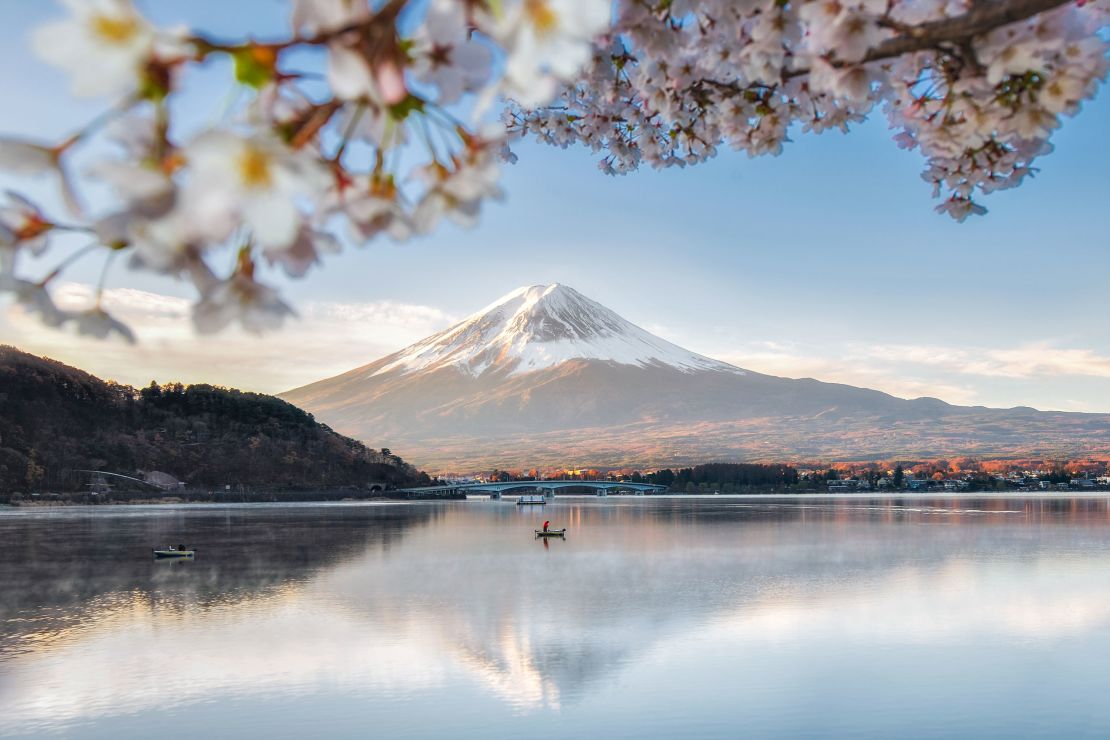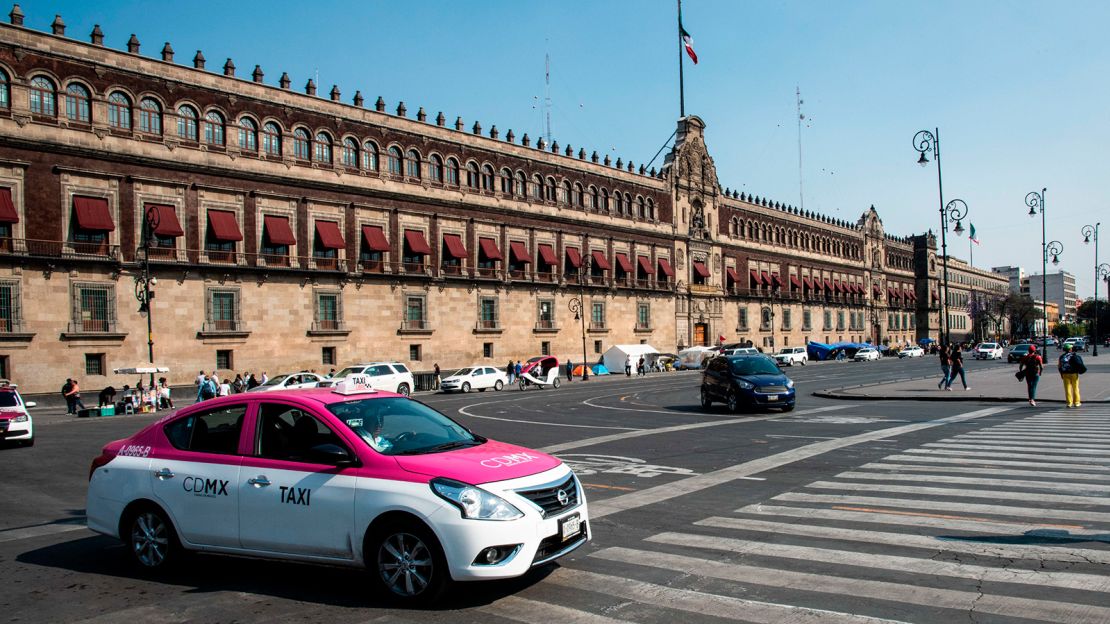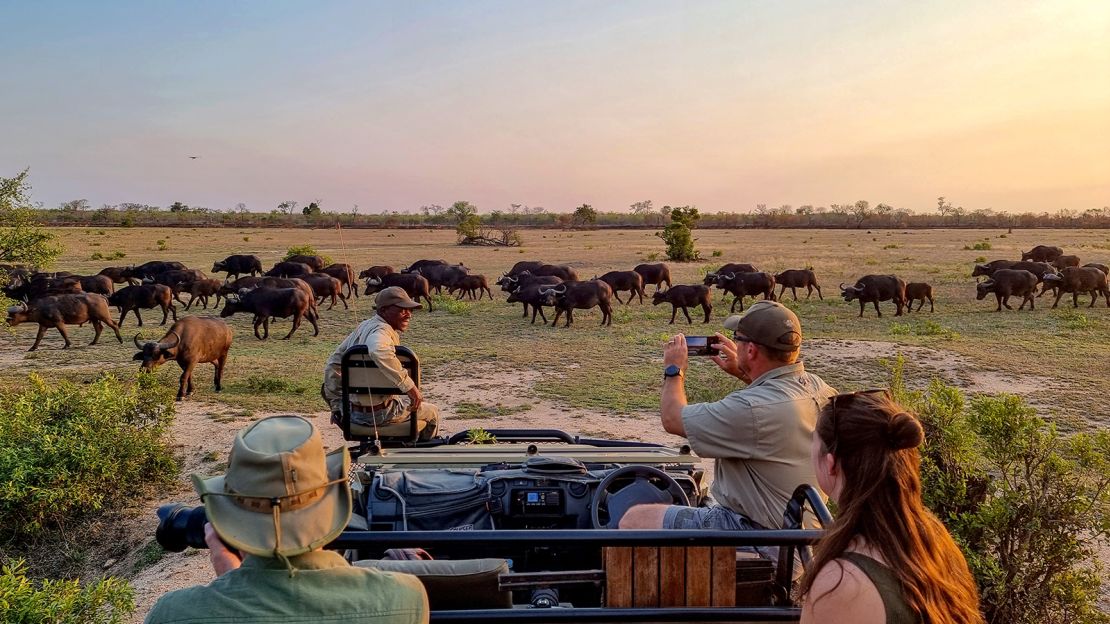International tipping: How to cut through the chaos and confusion
9 min readCNN
—
Jennifer and Ryan Burditt of Augusta, Georgia, had a lot on their minds earlier this year as they planned their first out-of-country vacation.
They settled on Ireland, Scotland and England, places where Jennifer had ancestral roots. They focused a lot of their prep work on sightseeing – arranging tours from the Cliffs of Moher to countryside castles.
But once the couple, who are in their early 30s, arrived, they realized they hadn’t given much thought to something that came up daily: tipping. And they discovered the overseas gratuity landscape came with a learning curve as steep as those Irish cliffs.
“It was more us feeling it out when we arrived,” Ryan told CNN Travel. In the United States, “tipping is very customary. I’d say expected. Whereas over there in all three of those individual [places], it was more nuanced than that.”
Even experienced travelers can find the tipping landscape bewildering. Not everyone has the same experiences or advice for the same place. Customs have always varied wildly when crossing borders. Throw in the pandemic upending standard practices in some places, and it’s no wonder folks are more flummoxed than ever.
CNN Travel talked to etiquette experts and recent travelers to find out what’s generally expected in popular destinations now and help travelers find ways to make tipping more straightforward and less stressful.
Tipping in Asia and Australia

Tom Marchant, the owner and co-founder of luxury travel company Black Tomato, told CNN Travel in an email interview that “each country and culture has its own distinct take on tipping and although differences may be subtle, it can be a delicate matter.”
In Asia, you first must discern whether you should tip at all.
“In countries such as Japan and South Korea, tipping is not acceptable, and we should refrain from leaving extra anywhere we go,” said etiquette expert Maryanne Parker of the website Manor of Manners in an email. “Tipping is not part of their culture, and it is perceived as rather rude.”
“I actually visited [Japan] last week, so I can confirm,” said Nick Leighton, host of the weekly etiquette podcast “Were You Raised By Wolves?” and a frequent traveler. “Japan is remarkably consistent on that front” despite the pandemic. The caveat there: Tipping is customary in ryokans, traditional inns with very intensive service.
Leighton also said you won’t find a tipping culture on the island of Taiwan.
Meanwhile, “in China, the lack of tipping culture is clear from the process, and the check is often presented to diners at the beginning of the meal before the dishes are even brought out,” Marchant said.
Heading to Thailand? Tipping’s “not an ingrained part of Thai culture, [and] locals rarely tip although it is becoming more common,” Marchant said.
Similarly, tipping is not common in Australia, he said. In New Zealand it’s “entirely discretionary,” although a 10% tip for excellent service has become customary in restaurants.
However, don’t assume all countries in the Asia-Pacific region are no-tip zones, Parker said. Tipping is customary in India, for instance.
But how much to tip and when? For any place, read multiple, established sources before your trip, Leighton advises, and look for a broad consensus as you’re not going to always get the exact same advice.
For example with India, you can find out more from guidebooks such as Fodor’s and travel agencies such as Audley. Then there’s this handy map from Visual Capitalist, which has compiled global tipping advice from Tripadvisor.
Marchant said to talk to locals about tipping immediately upon arrival and “don’t be afraid to ask hotel staff, waiters or tour providers.”
Freelance writer Lisa Wyatt Roe of Austin, Texas, also suggests social media as a resource. “Doing travel research is my happy place, and I’m grateful for Facebook groups dedicated to specific destinations. I’ve found ‘Do I I tip?’ is asked nearly daily in those groups.”
Tipping in Europe

Roe – who celebrated her 60th birthday by going to nine countries in Northern Europe in the fall and winter of 2022 – cautions not to lean too hard on what you used to know.
“I think ‘chaos’ is the best word for the state of tipping in Europe now. The old rules are out, and no one is really sure what the new rules are. I think that’s driven by several factors: the steady creep of US culture taking over the world, more Americans traveling abroad, the pandemic and tech making cash nearly obsolete,” she said.
With that in mind, here’s some recent advice on a few European destinations, where service and gratuity charges might already be added to the bill:
“Tipping is not common in Spain and is rarely practiced by the locals,” Marchand said. He recommends tipping €2.00 – €3.00 at casual restaurants and bars and 5% to 10% of the total bill at more upscale places.
Semi-retired teacher John Robinson of Greensboro, North Carolina, recently went to Sicily with 11 other friends, a loosely organized group that’s been going to various places in Europe for decades. They arranged private tours all over the southern Italian island the first week and then settled down into a hotel in Cefalù for a relaxing second week.
The group never saw a service charge on a bill with the private tours or at restaurants. When the full group went out, they paid one bill as a group, divided the amount evenly and added in a 10% tip.
Robinson said the tipping culture is less pervasive in Sicily than the United States and even more laid-back than in Rome. “It’s not expected; it’s not sought after. And if you do tip them, [they’re] very grateful.”
They also formed a relationship with some bartenders and waiters and gave them some cash at the end of the trip. The group also tipped the tour guides from the first week, anywhere from $10 to $25 each depending on length of tour. “They weren’t asking for it, but they were really, really good.”
In Italy in general, the guidebook Frommer’s says service charges are typically added to hotel and restaurant bills. Look for the words servizio incluso on the bill if you’re not sure. Want to reward good service at a restaurant? Round up the bill, Frommer’s says.
In the United Kingdom, a “10-15% tip is customary” if you are happy with the service, says the website Scottish Tours. It’s now very common for restaurants to add a discretionary 12.5% service charge to your bill, so always check that first before reaching for your wallet.
As for tipping culture in the US vs. the UK, Ryan Burditt said, it’s “really opposites to me. Here in the States, it’s expected. Whereas over there, it doesn’t seem like it’s as much of an expectation.”
It’s customary in the UK to tip or pay a charge in places with table service, but if you’re ordering at the bar or counter and carrying your own food and drink to the table, you won’t be expected to tip. Tipping taxi drivers isn’t essential but it is polite to do so and it will be greatly appreciated.
In France, tips are not mandatory, but it’s “a pleasant surprise if we leave a tip,” Parker said. She also said Eastern Europe in general is a place where tips are expected.
“In Scandinavian countries, tipping is not mandatory; however, tipping is customary and greatly appreciated by guides, drivers and servers at restaurants,” Marchant said.
Tipping in North America

Visitors to the United States could be in for some tipping culture shock.
“The tipping culture of America is almost unique in some ways,” Leighton said. “We’re definitely at one end of the spectrum.”
The Independent, a British newspaper, had an interesting take on tipping in the United States. “Almost anything that moves in the sphere of travel in the US” is up for tipping. Some of its suggested bare minimums: 15% for taxi drivers; at least $1 a bag for bellhop service; 18% for restaurant service; $1 per drink at bar.
But be forewarned, that take would not be popular among US workers. In many parts of the United States, 20% is now more or less customary, and many Americans have starting tipping more since the pandemic was so crippling to the service industry.
What about tipping for counter-service coffee? The Independent suggests not to succumb to the pressure and choose “no tip” on a payment screen. (That question is another story in itself.)
Generally speaking, Canada and Mexico fall somewhere in between Europe and the United States on tipping culture, leaving 15% extra for good service in restaurants, for instance.
Leighton pointed out an article in the Toronto Star newspaper that had excellent guidance, including the tidbit that tipping expectations are higher in Quebec province than the rest of the country.
In Mexico, a “tip is not mandatory, but everyone expects it,” Parker said. “Besides, who wouldn’t leave a tip if the server is friendly, effective and serves the best margaritas!”
In the Caribbean, tips “are widely accepted and expected,” Parker said. “From my personal perspective as a European-American visiting the Caribbean, leaving a generous tip is a way to help the local communities and the local families. Many of the islands are struggling, some endured natural disasters.”
Tips in other destinations

“If you’re traveling to Africa, tipping customs will vary by experience and destination so expect to modify your tipping practice whether on safari or staying at an urban property in a major city,” Marchant said.
“For a safari, especially when you are working and getting to know guides so intimately … it shows both grace and appreciation to tip. … If experiencing a high-end safari camp where guides are hugely integral to the experience, consider $20-50 per day.”
“When visiting Central and South America, it is common practice to leave change in the native currency, which is greatly appreciated by locals as currency exchanges are not as readily available and can be costly to the user,” Marchant said. “In Peru specifically, it is customary to tip guides and drivers about 10%.”
Seasoned traveler Jenn Ciccarelli, a senior manager of digital strategy and analytics in Atlanta, visited both Chile and Panama in 2023.
“I live by the philosophy that I tip 20-30% in the States anyway and often I find that the service culture, especially in South America and Central America, is so much better than here, and in Europe as well, that I am more inclined to want to give.”
Chile and Panama, both in Latin America, provide another example of how two countries in the same broad region can have different tipping cultures. In Chile, a 10% service charge is usually added to the bill. In Panama, a restaurant service charge is typically not added, and 10% is the customary tip amount.
Generosity pitfalls
Brett Anitra Gilbert, an associate professor of management at Kogod School of Business at American University in Washington, D.C., has traveled to Italy, Egypt, the United Kingdom, Cabo Verde (where she has a home), Brazil, Uruguay, the Netherlands, Finland and Estonia so far in 2023.
“I try to keep my tipping consistent with local practices and customs. … Oftentimes, if I am leaving a country and have extra cash, I will leave it for the housekeepers at my hotel, who are often immigrants in whatever country I was visiting,” she wrote in an email. “When I tip, it’s largely for restaurants, massage services, tour guides and hair appointments.”
She’s also learned from experience that a well-meaning tip can backfire when you don’t know the entire lay of the land.
“I once had an experience in Madagascar where we tipped the driver who was with us 24 hours for six days 25% of our bill (which was only $100). And he was so excited we were taken aback. Realizing we’d likely made a faux pas, I looked up the average salary there, and realized we gave him half a year of the minimum income there,” Gilbert said.
“Those mistakes can give preferential treatment to clients who locals think will tip well and potentially result in locals getting into conflicts over who will serve what clients.”
Ciccarelli said she tries to push the tipping boundaries toward the generous side when overseas.
“I think for a lot of these people, especially during the pandemic, their livelihoods were ravaged. And so now I feel like now is kind of an opportunity where people are traveling again and it’s kind of a chance to give back.”
The Burditts of Augusta are already eyeing another European trip – next time to Portugal and Spain. And they vowed to be more tip-ready for that one.
Leighton longs for the day that tipping could just end.
“Broadly speaking, I wish we didn’t have tipping in the world. I feel like it causes so much anxiety. I do wish we could all figure out a way to be like Japan and build in living wages for everybody and figure out a way where we didn’t need to have tipping. … I don’t think we’ll ever get there, but that would be my dream.”



